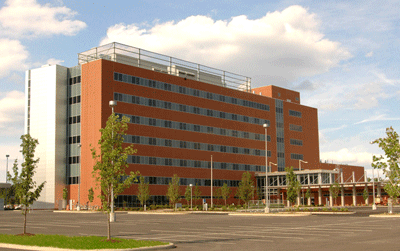Josh Behun - St. Elizabeth Boardman Campus Inpatient Facility -
| Home | Josh's Bio | Building Statistics | Thesis Abstract | Tech Assignment | Thesis Research | Thesis Proposal | Presentation | Final Report | Reflection | eStudio |

User Note:Note: While great efforts have been taken to provide accurate and complete information on the pages of CPEP, please be aware that the information contained herewith is considered a work-in-progress for this thesis project. Modifications and changes related to the original building designs and construction methodologies for this senior thesis project are solely the interpretation of Josh Behun. Changes and discrepancies in no way imply that the original design contained errors or was flawed. Differing assumptions, code references, requirements, and methodologies have been incorporated into this thesis project; therefore, investigation results may vary from the original design. |
Thesis Proposal |
|
The St. Elizabeth Boardman Inpatient Facility is a 65 million dollar renovation to the already existing hospital located in Boardman, Ohio. The hospital, owned by the Humility of Mary Health Partners, began the renovation project in October of 2005 and has recently finished construction of the new addition in August of 2007, which consists primarily of a seven story, 25,000 square foot tower addition. Structurally, the building has been designed as three distinct sections; the patient tower, the surgical wing, and the diagnostic wing. The patient tower is the majority of the renovation, though the diagnostic wing has also received an addition. The structural system for the patient tower addition consists of structural steel framing with a brick façade and an aluminum panel curtain wall system that exists on the north facing elevation of the tower, while the rest of the building is primarily two stories of masonry construction. The proposed thesis is to investigate the validity of a redesign of the patient tower with a structural concrete system, as apposed to the original steel frame design. From calculations performed throughout the second technical assignment, it was determined that the steel system used would have been the most efficient design for the building. Though, a structural alteration may provide additional improvements throughout other applications of the building’s functions and processes, including; construction, operation, overall design efficiency, or any other number of areas of practical usage. Along with the redesign of the patient tower’s main structural system, a few breadth studies will also be conducted. As the design of the building undergoes a variety of modifications, the overall cost, scheduling, and construction sequence for the building are likely to change as well. Thus, to make an adequate comparison of the differing structural systems, an updated estimate and construction schedule will be prepared for the concrete system and the construction processes that are involved. Once all of the final components of the hospital are considered, the effect the building places on the environment and the degree of sustainable practices used throughout the construction phase and its life cycle will also be evaluated. With this information, it can then be determined how close the hospital would be to obtaining a LEED ranking and becoming acknowledged as a certified “green” building. Also, with an evaluation of the amount of earnable LEED points, the necessary steps to improve efficiency can be established and the goal to achieve this recognition, or possibly raise it to a higher level. Along with sustainable effects, the installation of a vegetated green roof, atop the two story operating room / kitchen-cafeteria area, will be evaluated to determine its effects on the summertime cooling demands in comparison to the current EPDM roof membrane system.
|
Senior Thesis | The Pennsylvania State University | Architectural Engineering | AE Lab | Contact Josh |
This page was last updated on April 12, by Josh Behun and is hosted by the AE Department ©2008